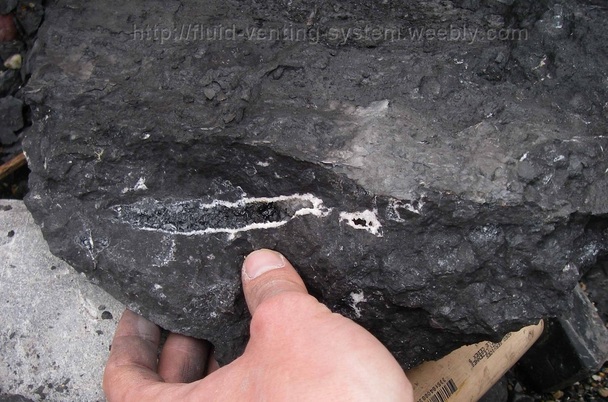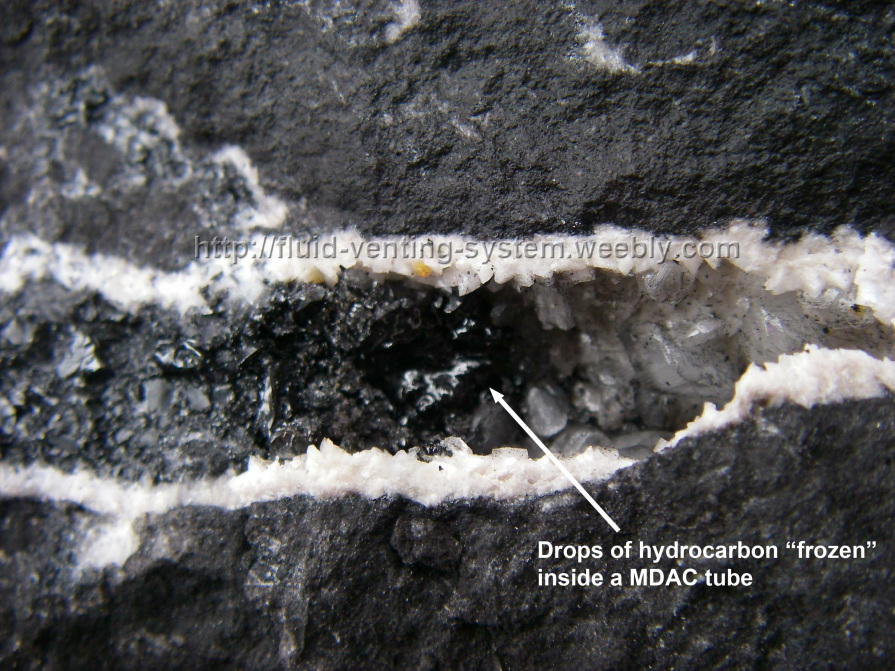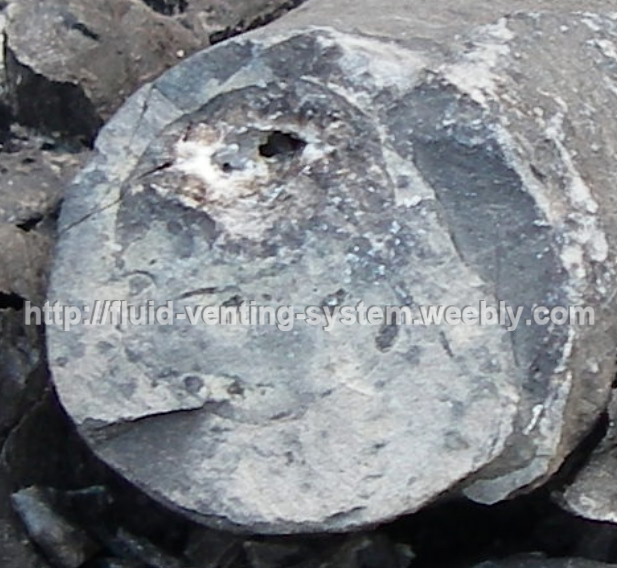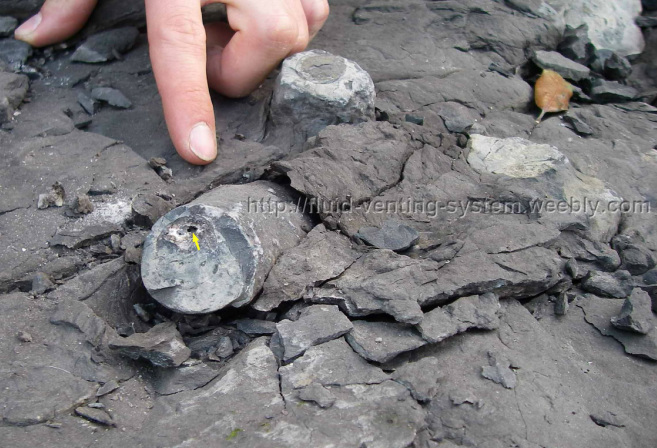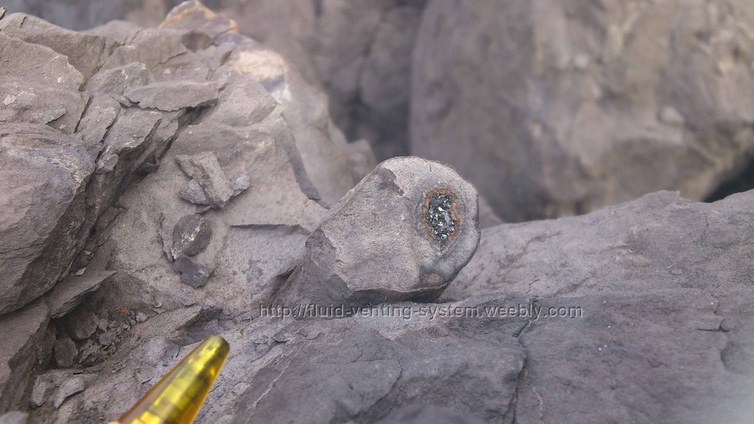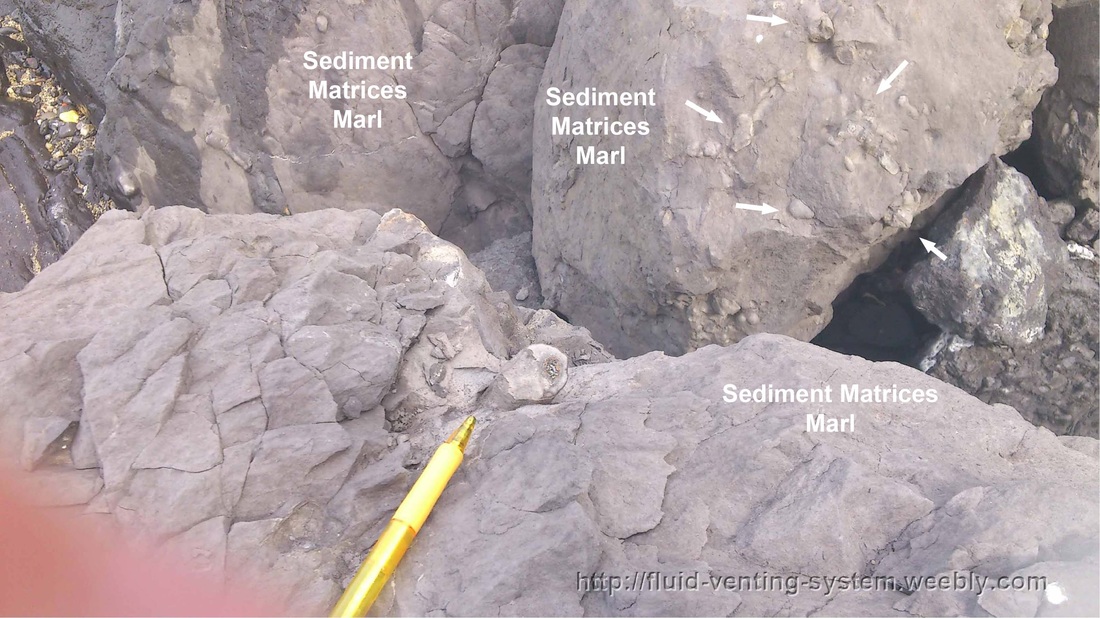Methane derived authigenic carbonate tubes by Sutieng Ho & Jean-Philippe Blouet
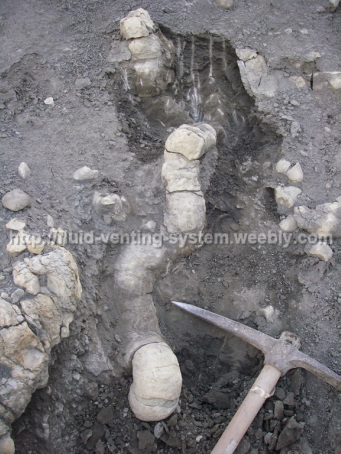
Methane derived authigenic carbonate tubes are fossilized hydrocarbon conduit in fine-grained marine sediments (cf. Campbell, 2006).
They are the product of chemical reactions: anaerobic methane oxidation and calcite precipitation in a depth of a few tens or a hundred of meters (Ritger et al., 1987; Campbell et al., 1993; Judd and Hovland, 2007). Methane derived authigenic carbonates (MDAC) are characterized by the depletion of carbon isotope δ13C in the carbonate fraction (Ritger et al., 1987; Campbell et al., 2008, 2010).
MDAC were first identified by isotopic analysis in 1968 on the continental margin of the north-eastern United States by Hathaway and Degens, who named them Methane-Derived Marine Carbonates (Hathaway and Degens, 1968). Since the 1980’s, they are more commonly known as Methane-Derived Authigenic Carbonates (Ritger et al., 1987) or authigenic carbonates (Hein et al., 1979).
Active or live cold seep chimneys can only be observed at the present day seabed. Good examples are those at the continental shelf edge west of the Crimea Peninsula in the northern Black Sea. You can click on this link http://www.youtube.com/watch?v=P6tORN44X58 to watch a video of live chimney examples by MARUM/Max-Planck-Institute for Marine Microbiology Microhab.
Photo in the left is a fossilized MDAC tube of approximately 1 meter length that has been dug out by Blouet and Ho in 2013.
Solid bitumen inside fossilized MDAC tubes
Trace of hydrocarbon migration along fluid conduits is demonstrated by the presence of bitumen inside MDAC tubes (fig. 1).
Each MDAC tube often contains a central conduit, which is for most of the time filled by, but not necessary, different kind of crystals including for example: calcite (fig. 1, 2), domite, barytine, pyrite or even solid bitumen (fig1, 3) (Agirrezabala et al., 2008).
In some cases, void or empty space can present inside the central conduit and form a canal (fig. 1). The process of central conduit infilling is entirely dependent on the frequency, duration, and intensity of fluid migration, which play a role to transport and depose ions and cations inside the fluid conduit for crystals growths and precipitations (see section here).
Each MDAC tube often contains a central conduit, which is for most of the time filled by, but not necessary, different kind of crystals including for example: calcite (fig. 1, 2), domite, barytine, pyrite or even solid bitumen (fig1, 3) (Agirrezabala et al., 2008).
In some cases, void or empty space can present inside the central conduit and form a canal (fig. 1). The process of central conduit infilling is entirely dependent on the frequency, duration, and intensity of fluid migration, which play a role to transport and depose ions and cations inside the fluid conduit for crystals growths and precipitations (see section here).
|
Fig. 1. A fossilized gas conduit in a bloc of marl stone which was originally 1 meter width and has been reduced to a tens centimeter bloc during the sampling operation.
Image on the right shows an oblique section of a bitumen filled chimney. Image below is an enlargement of the chimney. Flow of hydrocarbons has been cooled off inside the chimney. This may happen during the fluid supply declining or during the deactivation of venting. |
|
Fig. 3. A central conduit of MDAC tube filled by solid bitumen (dark crystal patch) and calcite cement (brown color ring).
Image in the right is a individual tube that has been originally included inside a bloc of marl. Image below is the zoom out of the marl bloc. In the background, a population of MDAC tubes can be seem occur within the sediment matrice, the marl. |
|
Key words: Jean-Philippe Blouet Sutieng Ho methane authigenic carbonate
|

Fluid-Venting-System website by S. HO is licensed under a Creative Commons Attribution-NonCommercial-NoDerivatives 4.0 International License.

